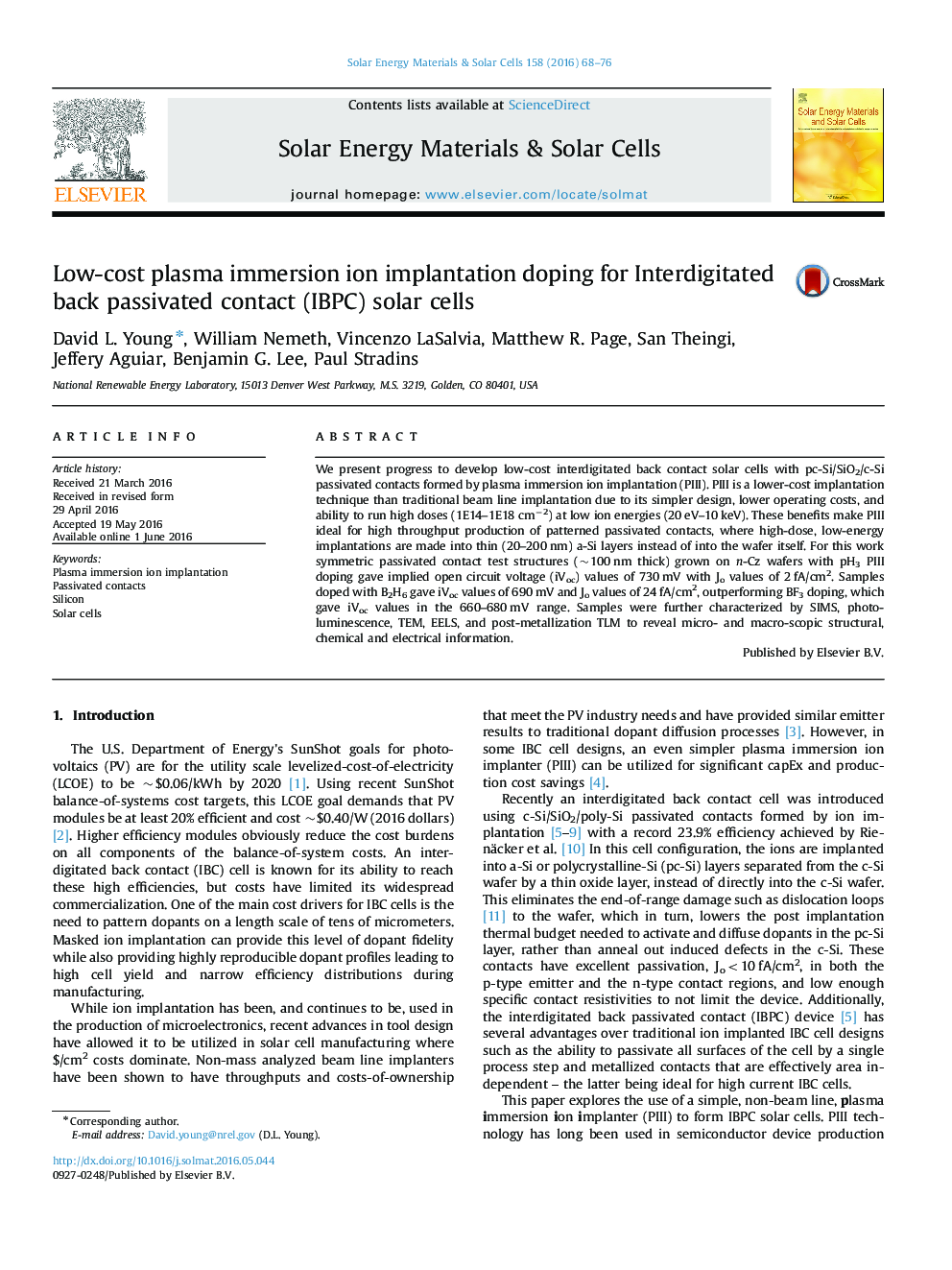| کد مقاله | کد نشریه | سال انتشار | مقاله انگلیسی | نسخه تمام متن |
|---|---|---|---|---|
| 6457423 | 1361708 | 2016 | 9 صفحه PDF | دانلود رایگان |

• PIII ion implantation is used to form pc-Si/SiO2 contacts to c-Si solar cells.
• N-type Jo < 4 fA/cm2, iVoc ~ 730 mV.
• P-type Jo < 35 fA/cm2, iVoc ~690 mV.
• EELS data are shown on the passivated contact structure.
• Al2O3 is used to passivate the pc-Si/SiO2 contact structure.
We present progress to develop low-cost interdigitated back contact solar cells with pc-Si/SiO2/c-Si passivated contacts formed by plasma immersion ion implantation (PIII). PIII is a lower-cost implantation technique than traditional beam line implantation due to its simpler design, lower operating costs, and ability to run high doses (1E14–1E18 cm−2) at low ion energies (20 eV–10 keV). These benefits make PIII ideal for high throughput production of patterned passivated contacts, where high-dose, low-energy implantations are made into thin (20–200 nm) a-Si layers instead of into the wafer itself. For this work symmetric passivated contact test structures (~100 nm thick) grown on n-Cz wafers with pH3 PIII doping gave implied open circuit voltage (iVoc) values of 730 mV with Jo values of 2 fA/cm2. Samples doped with B2H6 gave iVoc values of 690 mV and Jo values of 24 fA/cm2, outperforming BF3 doping, which gave iVoc values in the 660–680 mV range. Samples were further characterized by SIMS, photoluminescence, TEM, EELS, and post-metallization TLM to reveal micro- and macro-scopic structural, chemical and electrical information.
Journal: Solar Energy Materials and Solar Cells - Volume 158, Part 1, December 2016, Pages 68–76